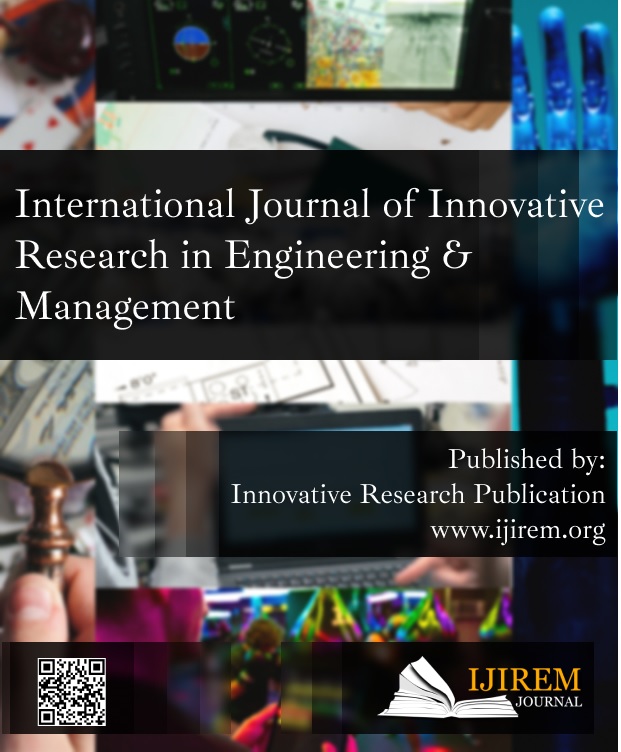Legislative and Judicial Response to Child Sexual Abuse
Keywords:
Abuse, Child, Judicial, Legislative Sexual, Sexual AbuseAbstract
Citizens of tomorrow are today's children. They are the country's future. Child abuse is a terrible problem in India since it is a rising and recurring problem; too many youngsters die or get mistreated later in life. Abuse happens when someone mistreats or exploits another person, with no regard for their integrity or inherent value as persons, and in a way that jeopardizes their well-being. Kid abuse is defined as an adult inflicting significant physical or mental harm on a child. Physical, sexual, neglect, and abandonment are all examples of child abuse, as are emotional and psychic abuse. Youngster abuse may be a lifelong problem and burden for the victimized child. Pregnancy, or a new experience with sexual assault, might reopen the survivor's traumas. The arousal of early abuse-related trauma can also be triggered by approaching or having attained middle age. As the survivor faces the challenges of adulthood, the childhood legacy becomes increasingly onerous. A shift in the balance of a close connection is frequently the catalyst. The facade can no longer withstand the pressure, and the underlying disintegration emerges. When and if a breakdown happens, it might present with symptoms that are similar to those of almost any mental condition. Survivors are afraid of becoming mad or having to die.
Downloads
References
P. Lewis, “Delayed Complaints in Childhood Sexual Abuse Prosecutions—A Comparative Evaluation of Admissibility Determinations and Judicial Warnings,” Int. J. Evid. Proof, vol. 10, no. 2, pp. 104–127, 2006, doi: 10.1350/ijep.2006.10.2.104.
P. Yadav, V. Nageshwar, and J. Prabhu, “Reproductive and sexual health knowledge and utilization of services among adolescents: A review based on available literature,” Indian Journal of Public Health Research and Development. 2019, doi: 10.5958/0976- 5506.2019.02817.1.
N. Sharma, S. K. Jain, P. K. Singh, and R. Garg, “A morphometric study of predictors for sexual dimorphism of cervical part of vertebral column in human foetuses,” J. Anat. Soc. India, 2017, doi: 10.1016/j.jasi.2017.12.004.
A. Rosenbaum, P. J. Gearan, and W. Warnken, “The Ecology of Domestic Aggression toward Adult Victims,” in Case Studies in Family Violence, 2000, pp. 39–61.
D. Crosswhite and J. S. Kim, “Child sexual abuse,” in Solution-Focused Brief Therapy with Clients Managing Trauma, 2018.
R. Gangal, A. haroon, M. Yadav, and V. K. Chavada, “Sex determination from sternal end of 4th rib in western U.P. population: An autopsy study,” J. Indian Acad. Forensic Med., 2012.
N. Garg, A. K. Jain, A. Ansari, A. Sharma, J. Singh, and T. Chugh, “Dimorphism of maxillary and mandibular canine teeth in establishing sex identity,” Indian J. Forensic Med. Toxicol., 2012.
A. Choube, S. P. Bahal, A. Srivastava, and M. Sharma, “Knowledge and child care practices regarding childhood diarrhoea- a cross sectional study,” Indian J. Community Heal., 2014.
L. K. Murray, A. Nguyen, and J. A. Cohen, “Child Sexual Abuse,” Child and Adolescent Psychiatric Clinics of North America. 2014, doi: 10.1016/j.chc.2014.01.003.
T. Blakemore, J. L. Herbert, F. Arney, and S. Parkinson, “The impacts of institutional child sexual abuse: A rapid review of the evidence,” Child Abus. Negl., 2017, doi: 10.1016/j.chiabu.2017.08.006.
J. Rudolph, M. J. Zimmer-Gembeck, D. C. Shanley, and R. Hawkins, “Child Sexual Abuse Prevention Opportunities: Parenting, Programs, and the Reduction of Risk,” Child Maltreat., 2018, doi: 10.1177/1077559517729479.
B. Mathews and D. Collin-Vézina, “Child sexual abuse: Raising awareness and empathy is essential to promote new public health responses,” J. Public Health Policy, 2016, doi: 10.1057/jphp.2016.21.
J. Sanjeevi, D. Houlihan, K. A. Bergstrom, M. M. Langley, and J. Judkins, “A Review of Child Sexual Abuse: Impact, Risk, and Resilience in the Context of Culture,” J. Child Sex. Abus., 2018, doi: 10.1080/10538712.2018.1486934.
F. M. Mlekwa, T. Nyamhanga, P. L. Chalya, and D. Urassa, “Knowledge, attitudes and practices of parents on child sexual abuse and its prevention in Shinyanga District, Tanzania,” Tanzan. J. Health Res., 2016, doi: 10.4314/thrb.v18i4.6.
N. Stavas et al., “Perceptions of caregivers and adolescents of the use of telemedicine for the child sexual abuse examination,” Child Abus. Negl., 2018, doi: 10.1016/j.chiabu.2018.08.009.
